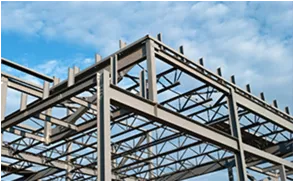- Afrikaans
- Albanian
- Amharic
- Arabic
- Armenian
- Azerbaijani
- Basque
- Belarusian
- Bengali
- Bosnian
- Bulgarian
- Catalan
- Cebuano
- Corsican
- Croatian
- Czech
- Danish
- Dutch
- English
- Esperanto
- Estonian
- Finnish
- French
- Frisian
- Galician
- Georgian
- German
- Greek
- Gujarati
- Haitian Creole
- hausa
- hawaiian
- Hebrew
- Hindi
- Miao
- Hungarian
- Icelandic
- igbo
- Indonesian
- irish
- Italian
- Japanese
- Javanese
- Kannada
- kazakh
- Khmer
- Rwandese
- Korean
- Kurdish
- Kyrgyz
- Lao
- Latin
- Latvian
- Lithuanian
- Luxembourgish
- Macedonian
- Malgashi
- Malay
- Malayalam
- Maltese
- Maori
- Marathi
- Mongolian
- Myanmar
- Nepali
- Norwegian
- Norwegian
- Occitan
- Pashto
- Persian
- Polish
- Portuguese
- Punjabi
- Romanian
- Russian
- Samoan
- Scottish Gaelic
- Serbian
- Sesotho
- Shona
- Sindhi
- Sinhala
- Slovak
- Slovenian
- Somali
- Spanish
- Sundanese
- Swahili
- Swedish
- Tagalog
- Tajik
- Tamil
- Tatar
- Telugu
- Thai
- Turkish
- Turkmen
- Ukrainian
- Urdu
- Uighur
- Uzbek
- Vietnamese
- Welsh
- Bantu
- Yiddish
- Yoruba
- Zulu
Sep . 30, 2024 05:16 Back to list
Steel Livestock Buildings An Efficient Solution for Modern Agriculture
In the world of modern agriculture, the optimization of livestock housing is crucial for enhancing productivity and welfare. Steel livestock buildings have emerged as a leading choice for farmers seeking durable, efficient, and flexible solutions for housing their animals. This article explores the advantages of steel structures for livestock, their design considerations, and the impact they have on operational efficiency.
Advantages of Steel Livestock Buildings
1. Durability and Longevity One of the most significant benefits of steel construction is its durability. Steel structures are resistant to many environmental challenges, including extreme weather conditions, pests, and fire. Unlike wooden structures, steel does not warp, rot, or become infested with insects. This durability means that steel livestock buildings can offer a longer lifespan, providing a better return on investment over time.
2. Cost-Effectiveness Although the initial investment for steel structures may be higher compared to traditional materials, the long-term savings are considerable. Maintenance costs for steel buildings are typically lower due to their resistance to environmental degradation. Furthermore, the efficiency of construction means labor costs can also be reduced, as steel components can be prefabricated and assembled on-site quickly.
3. Flexibility in Design Steel buildings can be customized easily to suit the specific needs of different types of livestock. Whether for cattle, pigs, sheep, or poultry, steel structures can provide ample space for movement, feeding, and other activities. The open-span design that steel allows can create large, unobstructed spaces, which is beneficial for animal welfare and operational efficiency.
4. Energy Efficiency Modern steel livestock buildings can be designed with energy efficiency in mind. Insulation can be incorporated into the building design to help maintain a stable environment, reducing heating and cooling costs. Additionally, the use of natural lighting through skylights can further decrease energy needs, thus lowering the overall operational costs.
5. Sustainability Steel is a recyclable material, which positions it well within today’s sustainability-focused agricultural practices. Many farmers are conscious of their environmental impact and are looking for building solutions that reflect their values. Steel buildings align with this goal, as they can be built using recycled materials and can themselves be recycled at the end of their lifespan.
steel livestock buildings

Design Considerations
When planning a steel livestock building, several design factors must be taken into account to ensure optimal functionality and safety for the animals
- Ventilation Adequate airflow is critical in livestock buildings to ensure animal health. Effective design must incorporate ventilation systems that promote airflow without causing drafts that could stress the animals.
- Space Management The layout must consider the space requirements of the livestock. Overcrowding can lead to stress and health problems, so proper calculations must be made to ensure adequate space for each animal.
- Accessibility The building should be designed for easy access by both animals and humans. This includes considerations for feeding, cleaning, and veterinary care. Wide doors and pathways can facilitate movement and operations, enhancing overall efficiency.
- Waste Management Effective waste management systems must be integrated into the design of steel livestock buildings. This can include slatted floors, manure pits, and other systems that help in managing waste efficiently while prioritizing animal welfare and environmental health.
Conclusion
Steel livestock buildings represent a modern solution for agricultural needs, combining durability, cost-effectiveness, and design flexibility. As farmers continue to adapt to changing demands and seek to enhance productivity and animal welfare, steel structures stand out as a viable option. Their sustainability and energy efficiency further align with the growing focus on environmentally responsible farming practices. By investing in steel livestock buildings, farmers can not only improve their operational efficiency but also ensure a healthier, more productive environment for their livestock, paving the way for the future of farming.
-
How Do Prefabricated Steel Structures Transform Modern Construction?
NewsJul.14,2025
-
How Do Prefabricated Metal Buildings Redefine Modern Construction?
NewsJul.14,2025
-
How Do Prefab Insulated Metal Buildings and Steel Structures Revolutionize Modern Construction?
NewsJul.14,2025
-
How Do Pre - Engineered Steel Structures Redefine Modern Construction?
NewsJul.14,2025
-
Advancing Modular Construction with Prefabricated Metal Structures
NewsJul.14,2025
-
Advancing Industrial Infrastructure with Prefabricated Steel Solutions
NewsJul.14,2025
Products categories
Our Latest News
We have a professional design team and an excellent production and construction team.












